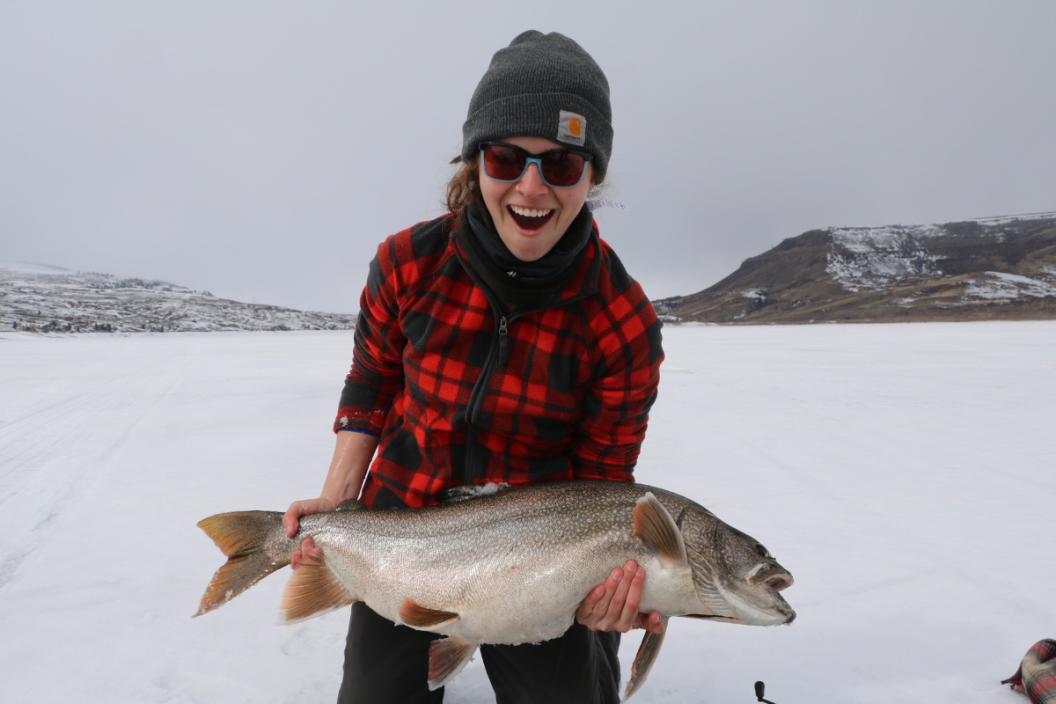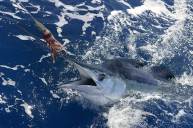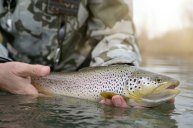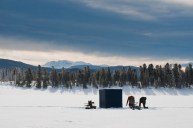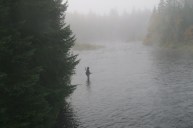When it comes to winter outdoor activities in Colorado, skiing is one of the first things to come to anyone's mind. Resorts cover the state throughout the Rocky Mountains offering ample opportunities to shred some gnarly pow. Although skiing fills most Coloradans' weekends, these folks are missing out on some incredible winter fishing opportunities.
Fishing in the winter in Colorado isn't for the faint of heart. Sub-zero temps, ice, and snow can all be expected in this time of year. However, the lack of competition for space on the water makes winter fishing genuinely incredible. Anglers don't have to worry about the water temperature being too warm, the parking lot being full, or fighting for a space on their favorite stretch of water. Instead, winter anglers are generally greeted with quiet mornings, frosty streams, and big, hungry fish ready to snap at your lure.
Whether you enjoy fly, ice, or open-water fishing, there are opportunities for all three during the winter in Colorado. With a wide array of species ready to bite in the wintertime, too, you could find perch, walleye, trout, or even northern pike on the end of your line. That fresh fish dinner in mid-January will make all the bundling up worth it.
Staying Warm While Winter Fishing
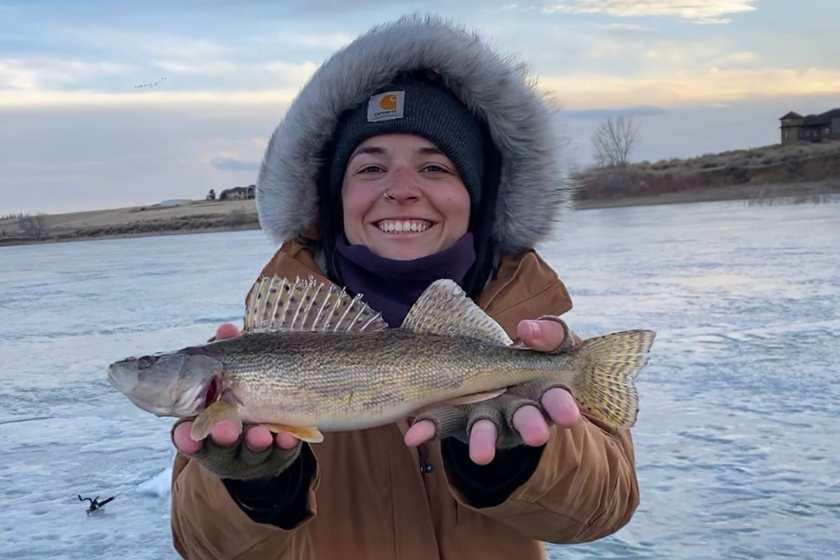
Gabriela Zalumbide
Staying warm may be the most difficult aspect of fishing in the winter. However, there are all kinds of gear out there to help you stay warm, dry, and safe. You're likely already familiar with hand warmers. You know, the kind you rip out of the plastic bag, heat up when exposed to oxygen, and stuff in your mittens. Did you know there are better options?
Electric hand warmers can double as phone chargers. They can also be charged back up, making this hand warmer a one-time purchase. Electrically heated layers exist, too, and they're usually battery-powered. Electric vests, socks, gloves, and more all are things you can consider adding to your gear pile prior to hitting some frozen water. Personally, I love DSG's heated women's gear. They come with rechargeable battery packs, too. In addition to picking up some heated items, consider getting insulated waders if you're going in the water, too. Fly anglers will find these extremely useful; I can't even feel the cold water temps through my insulated waders. I even use them for ice fishing instead of snow pants.
Fly Fishing in Colorado Winters
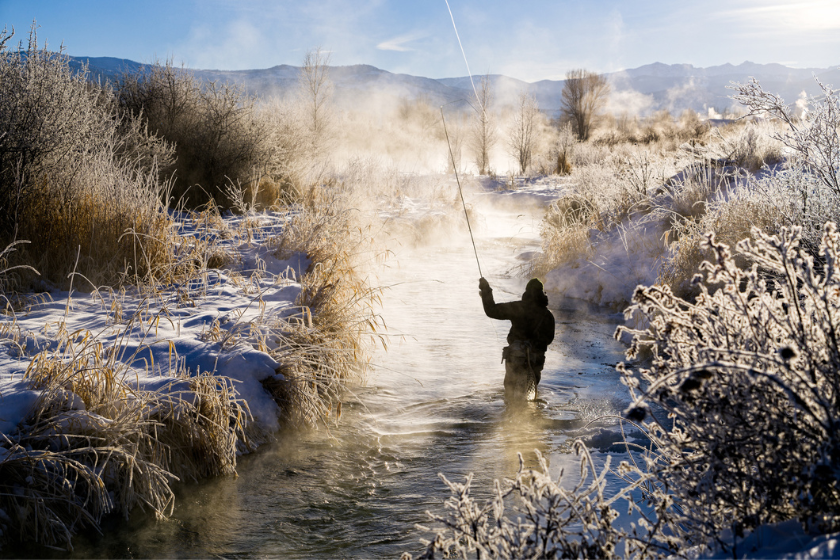
Fly fishing can be tricky in the winter as small bodies of water freeze over, reducing access for anglers. But depending on where you're fishing, larger rivers may still be open, southwestern reservoirs might not be completely frozen, and springs feeding into reservoirs can leave open spots in the ice. Other places worth checking to see if they're not frozen over are areas directly below dams. Oftentimes, the outflows from the dams don't stop in the winter, and the moving water keeps it from completely freezing over. This can provide anglers with half a mile or more of river access even in February.
When fly fishing in the winter, you can't really expect any bug hatches to be occuring. However, year-round staples like squirmy worms, streamers, and Mysis shrimp are great options for winter wet flies. Small hook sizes paired with 5x or 6x leaders can prove deadly for picky winter trout. Consider stocking up on weights, too, so your flies can get down to where the fish are. If you're looking to cast a fly in January, check out some of the rivers near the front range like the Big Thompson, Poudre, and South Platte Rivers. Calling local fly shops is always a good idea. The folks working there have the scoop on what's open, what's frozen, and what the fish are biting.
Open Water Fishing in Colorado
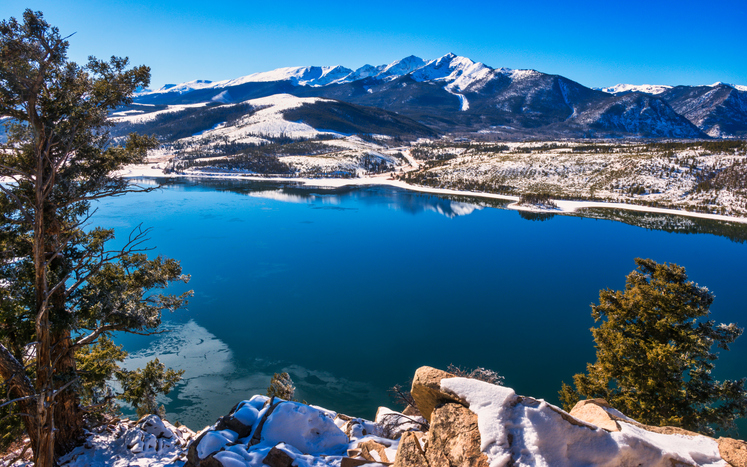
Open water can still be found in some places in Colorado mid-winter. The eastern part of the state may be unfrozen if temperatures have been mild. It's worth checking the far southwest corner, too, or even reservoirs that share a border with New Mexico. Places like Navajo State Park, McPhee Reservoir, and Sterling Reservoir might have what you're looking for into the late season. Fishing these spots in the winter is almost identical to fishing them in the summer; you'll just have to keep warm while on the boat or fishing from the shore.
What may change is the location of the fish and what they're eating. Since bug and plant growth aren't very plentiful in winter, many fish become more aggressive towards baitfish. They may also hole up in pockets of warmer water where it's easier for them to swim. Some fish species spawn in late winter and move closer to the shore where the water temperature is milder after living in the deepest hidey-holes in early winter. This is where knowing some natural history information about your favorite fish species can come in handy. Knowledge about what the fish are eating, where they're located, when they spawn, and the water temperatures they prefer can make or break a winter fishing trip.
River Fishing in Colorado Winters
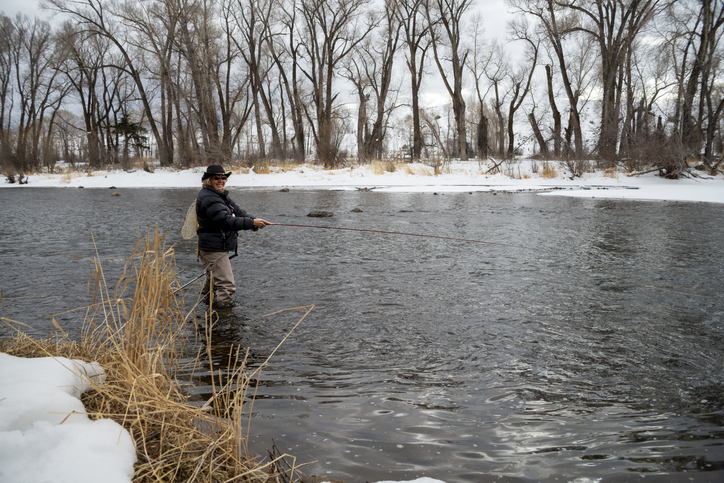
Fishing along frozen creeks and rivers in the winter can be one of the most visually stunning times to to it. It's a beautiful thing when that orange morning sun glints off crystals of ice and snow, you make a perfect cast, and a fat brown trout lands in your net. The most difficult part of fishing rivers in winter is finding one that's open. Oftentimes, even small stretches of river remain open all winter long. As previously mentioned, tailwaters below dams and places where springs feed into other bodies of water are good places to check first. Rivers throughout the entire state will have pockets of open water, so you can go fish anywhere from the South Platte River to the Colorado. The Taylor River is known for its tailwaters, and the Gunnison has pockets that stay open year-round.
Ice Fishing in Colorado
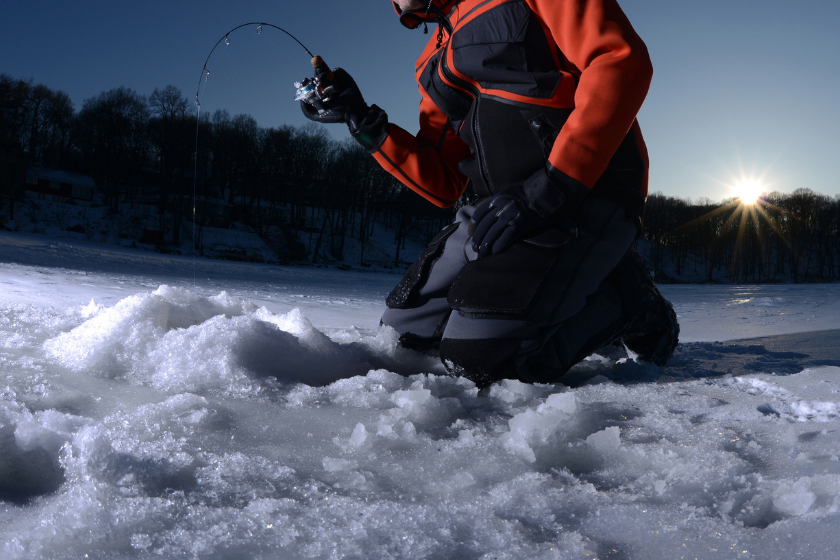
Even though fly, river, and open-water fishing are fun, the ultimate Colorado winter fishing experience happens out on the ice. Ice fishing provides the most opportunities to catch fish when the water's frozen. It's also completely different from the other three types of winter fishing. When ice fishing in Colorado, you only need a few things: an ice fishing rod, some lures, and an auger. However, some additional gear can really make your ice fishing adventures unforgettable. Electronics like flashers, underwater cameras, and sonar can give you information as to where fish are and what they're doing in real time. They also make ice fishing feel more like a video game than actual fishing. Insulated shelters and portable heaters can make the entire experience more comfortable. Upgrading to an electric auger can save your arms from hundreds of cranks on a hand auger, too. Plus, drilling more holes can help you triangulate good fishing spots, and marking those places with tools like OnX can make it easy to find them again after a fresh snow.
Ice fishing is available throughout the state. Reservoirs in the Rocky Mountain foothills frequently freeze over, providing opportunities for ice anglers to catch warm water species including walleye, sauger, yellow perch, bass, and more. Out west, anglers can expect to catch multiple species of trout, including the legendary lake trout. My personal favorite species to ice fish for, lake trout can get upwards of 50 pounds. Anglers lucky enough to hook into one will be rewarded with an icy freshwater battle they'll never forget. Some of my go-to spots include Blue Mesa Reservoir, Stagecoach State Park, Lake Granby, and Chatfield State Park.
Every warm-weather angler should give winter fishing a try. Skiers should, too. Despite the cold, folks tough enough to bear the frigid temps will be glad they did when they catch a beauty whether they release it or bring it home for the dinner table. Who doesn't love warming up after a day on the ice with a perch or walleye fish fry?
